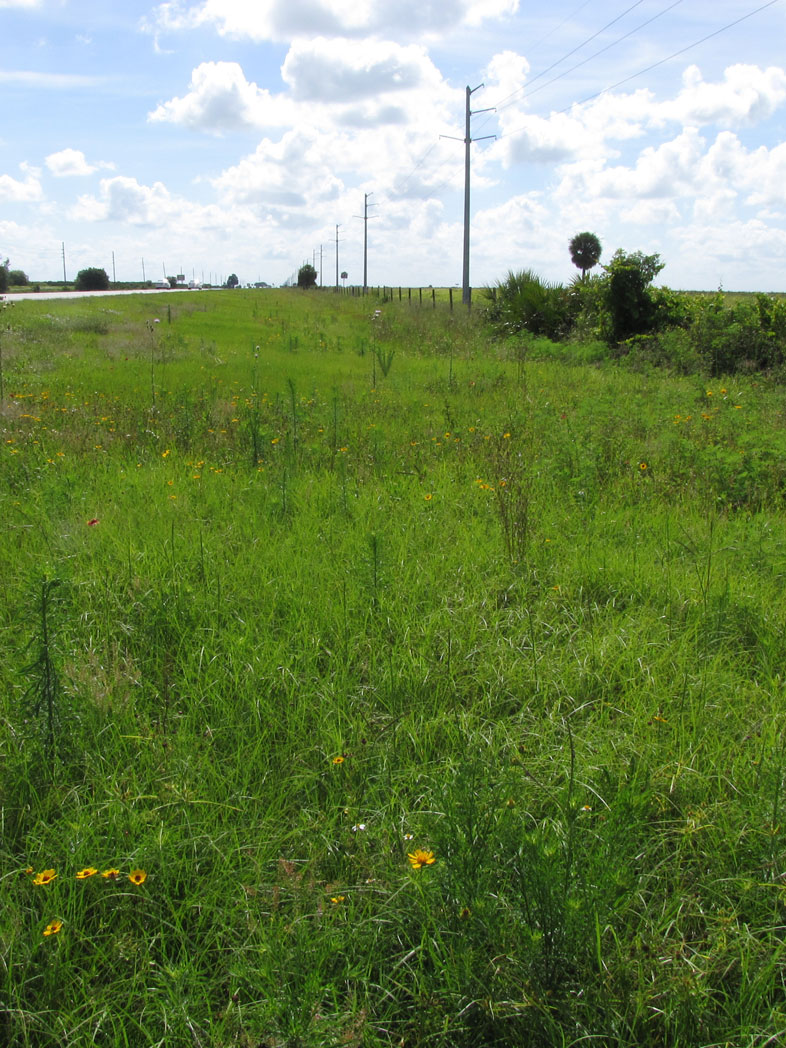Research tackles the issue of weed seeds in soil banks
The Florida Wildflower Foundation (FWF) has begun a four-year project to evaluate economical and practical site preparation methods to minimize weed competition in wildflower sites planted from seeds.
The project at Lake County’s Palatlakaha Environmental and Agricultural Reserve (PEAR) Park is being conducted in partnership with the county with cooperation from the Florida Industrial and Phosphate Research Institute at Florida Polytechnic University. It is funded by the State Wildflower license plate and Florida Power & Light (NextEra Energy Foundation), with Lake County contributing in-kind.
Brightman Logan, FWF’s Research Committee chairman, elaborates on the project and its objectives.
Question: What is the overall goal of the project?
Answer: FWF has had problems for years with weeds taking over planting sites. As we looked into it more, it all came down to the seed bank. A soil seed bank contains seeds that have been dormant for 20 years, in some cases. When you till or otherwise disturb the soil and expose once-buried seeds to sunlight, they can germinate and outcompete wildflower seedlings.

In talking with researchers, we came up with the idea of inverting the soil with a deep plow that completely flips the seed layer – typically the top 4 to 5 inches of soil. We will flip 12 to 14 inches of soil using a moldboard plow. By flipping it, we’ll bring new soil to the top that doesn’t have as many, or any, weed seeds in it. A savannah harrow also will be used to flip the soil to a depth of up to 24 inches. We’re trying different methodologies to see what works best.
We’ll also try “overseeding” the wildflowers, which puts more seed on the ground than normal to see if dense wildflower seedlings can outcompete weed seeds that germinate. For example, if 1 pound of wildflower seed per acre is called for, we’ll use 1½ pounds. At that point, we’re creating our own seed bank.
Q: Why is it important to control weed germination in wildflower plantings?
A: It’s all about competition. In many cases, we’ve planted wildflowers, and two or three years later, the site is a mess. You can’t even tell where the wildflowers are. Whatever seed that is right underneath the soil will come up and outcompete the wildflowers for soil nutrition, water and sunlight. One of the main goals of the project is to develop methods to create wildflower sites that will exist perpetually.
Q: Is this the first time a demonstration project like this has been tried?
A: We picked up on the research of Dr. Steven Richardson, who works with Florida Polytechnic University and its Florida Industrial and Phosphate Institute. Dr. Richardson, who is now one of our advisers, has a small plot he’s working on that is surrounded by thousands of acres of cogongrass, an invasive species that secrets chemicals that suppresses the growth of plants around it. Dr. Richardson is experimenting with inverting that soil to deeply bury the cogongrass seed, but he’s using plant plugs, while our project uses direct seeding.
Q: Why have Blanketflower (Gaillardia pulchella) and Spotted beebalm (Monarda punctata) been selected for seeding?
A: The seeds are easy to get, germinate well, and will do well in PEAR Park’s soil.
Q: Why will the study take four years?
A: You need a large timespan to see what else pops up in these beds. We’re looking at both short-term and long-term control of any weeds that pop up.
We’re going to establish four different plots. One will be a control where nothing is done, and the others will have different things done to see which plowing method works best, which soil-prep methodology works best, etc.
Q: If the project yields clear results about soil prep and treatment, what are the possible benefits to agriculture producers, roadsides, solar farms, restoration projects and others who want to establish large wildflower plantings from seed?
A: Throughout North and Central Florida, there are many varieties of weeds coming up in agriculture that are resistant to herbicides. Farmers have to use hand labor to remove them. If farmers – whether conventional, organic or solar – can use this inversion technique and some of the methodologies we’re trying to perfect, it will save time and money.
In addition, a lot of farmers, both organic and commercial, are planting strips of wildflowers around their fields. The wildflowers bring in beneficial pollinators and insects that are predators to insects harmful to crops. If they can keep those areas weed-free using inversion and the other techniques we’re experimenting with, they can use them over successive plantings.
Solar farms, restoration projects, roadside plantings – all will benefit in terms of effort and money saved if this PEAR project works as well as we think it will.
The State Wildflower license plate works for native, natural Florida by making projects like this one possible. Get your tag today.
